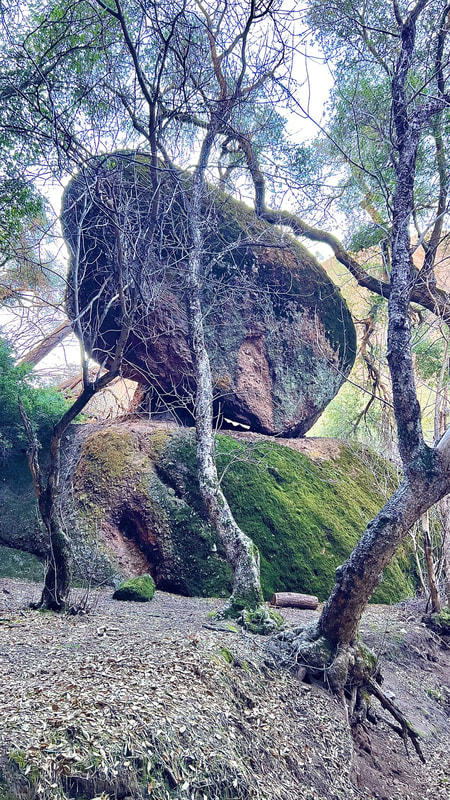|
Have you ever wondered how something as solid as a table or a rock can be made up of tiny particles and energy? Science tells us that what we perceive as solid is far from what it seems—and some theories even suggest our reality might be like a hologram. Let’s explore this fascinating idea in simple terms and touch on one of the most famous experiments that shakes up how we view reality: the double-slit experiment and quantum entanglement. Why Does Everything Feel Solid? Here’s the mind-blowing truth: everything in the universe is made of atoms, and atoms are about 99.999999% empty space! If they’re mostly empty space, why do things feel solid? It’s all about forces and energy: • Atoms are surrounded by electrons, tiny negatively charged particles. When two objects come into “contact,” their electrons repel each other because like charges repel. This creates an invisible force that keeps things from passing through each other. Imagine trying to push the negative ends of two magnests together-they resisit each other, creating an invisible force. The same thing happens at the atomic level when you touch an object! • What we perceive as “solidness” is really the sensation of this electromagnetic repulsion. So, solidity is an illusion created by energy interactions at the atomic level. Why Do Some Things Feel More Solid Than Others? Not everything feels equally solid because: 1. Density: Some materials, like metal, have atoms packed tightly together, creating more resistance when you touch them. Less dense materials, like foam, have more empty space between atoms, making them feel softer. 2. Bonds: Strong atomic bonds, like those in diamonds, make objects feel harder, while weaker bonds, like in rubber, allow objects to bend and feel less rigid. The Double-Slit Experiment: Does Reality Depend on Observation? Now let’s dive into an experiment that challenges how we understand reality: the double-slit experiment. 1. The Setup: • Imagine firing tiny particles (like electrons or photons) at a wall with two slits. • If no one observes them, these particles behave like waves, creating an interference pattern on the wall behind the slits. This pattern suggests that the particles travel through both slits simultaneously as a wave. 2. The Twist: • When scientists observe which slit the particle goes through, the interference pattern disappears. Instead, the particles behave like tiny objects, going through one slit or the other. 3. The Implication: This experiment suggests that the act of observation changes the behavior of particles. Reality at the quantum level doesn’t “solidify” into one outcome until it is observed. In other words, our perception plays a role in shaping reality itself! Quantum Entanglement: Everything Is Connected Now, let’s take it a step further with quantum entanglement. When two particles become “entangled,” their states are linked, no matter how far apart they are. If you measure one particle, the other instantly “knows” and adjusts its state accordingly—even if they’re light-years apart! Here’s what makes this fascinating: • This connection happens faster than the speed of light, defying our understanding of space and time. • It suggests that the universe is deeply interconnected at a fundamental level. In a way, quantum entanglement shows that distance is an illusion. Everything is part of the same unified energy field, and what happens to one part of the universe can influence another, no matter how far apart they seem. Is Reality Like a Hologram? Here’s where things get even more interesting. Some scientists propose that our entire universe might function like a hologram: • A hologram is a 3D image created from patterns on a 2D surface. • The holographic principle suggests that all the information needed to create our 3D universe is encoded on a 2D “surface” at the edge of the universe. If this is true, what we experience as solid objects, space, and time might actually be a projection of something deeper—an interplay of energy and information. What Does This Mean for Us? 1. Reality Is Deeper Than It Seems: Quantum physics shows us that what we perceive as “solid” is really energy and forces interacting. At the deepest level, reality is more like a web of possibilities. 2. Interconnection: Quantum entanglement reveals that we are all connected in ways we can’t fully see or understand. The energy flowing through you is part of the same universe that connects everything else. 3. The Illusion of Solidity: The world feels solid and separate, but at its core, it’s all vibrating energy fields and interactions. Many spiritual traditions describe this as maya, or the illusion of the material world. The Big Picture Our perception of the world is shaped by how our senses interpret energy and forces. Science tells us that solidity is an illusion, particles behave differently when observed, and everything in the universe might be interconnected through quantum entanglement. These ideas blur the line between science and spirituality, inviting us to explore reality’s mysteries. So, the next time you touch something “solid,” take a moment to reflect: you’re not just interacting with matter—you’re engaging with the energetic forces and connections that make up the universe. What do you think? Could the reality you experience be shaped by something far more mysterious than you’ve imagined?
0 Comments
Leave a Reply. |
AuthorFeelasoulphy Categories
All
Archives
December 2024
|

 RSS Feed
RSS Feed